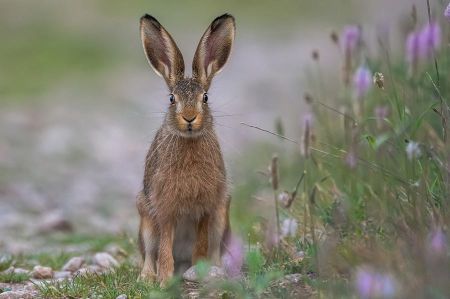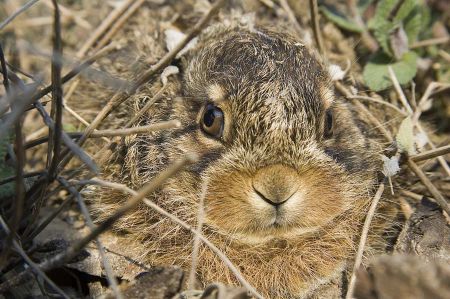Field hare school: The big Easter bunny lexicon
- Written by Portal Editor
It's that time again, Easter is fast approaching and every child knows the Easter bunny - but very few people know about the "original", the European brown hare.
He has “spoons” that you can’t eat with, “lights” that you can’t turn on or off, and a white “flower” that isn’t in the vase: the Easter bunny, aka the European brown hare! Eva Goris from the German Wildlife Foundation explains the rabbits' secret language.
Spoons, lights and a white flower
Here are the 10 secrets of the Easter Bunny from German hunter's jargon: the Easter Bunny Lexicon.
“His long ears are the spoons. They are funnel-shaped and ten to 15 centimeters long. This means the rabbit can hear quiet and distant noises very well,” explains Eva Goris.
The eyes are the lights or seers. As with all flight animals, they sit on the side of the rabbit's head. Eva Goris: “This special position allows the brown hare to see at a 360 degree angle and perceive every movement around it at lightning speed. Nevertheless, the brown hare is rather short-sighted.”
The tail is called a flower. It is mostly white in colour.
Typical of the brown hare are the long hind legs - called jumpers in the hunter's language.
Once the hare has some space to run, he makes a quick hare pass from the forest to the field in the evening. A reverse hare pass from the field to the forest in the morning is called an inlet.
When a hunter speaks of the hare's brat, he is not referring to an illegitimate rabbit child (the female rabbit fucks with several male rabbits anyway), but rather the soft, warm rabbit fur.
The hare doesn't sleep in the burrow. Eva Goris: “In order to rest or hide, he digs a small hollow in the ground, the Sasse.”
If the hare moves to the wood, it runs into the forest to hide from predators such as foxes or buzzards.
If the rabbit "holds one", she hasn't had too much herbal schnapps: she is pregnant. By the way, the young are not born, but planted.
If the bunny lost a set, this did not happen on the tennis court: a set of young bunnies are the siblings of a litter. If they were eaten by the fox, the sentence was lost.
 Crunchy, tender and, above all, green - this is what the brown hare's diet looks like. And that's a good thing: Vitamin C in dandelion leaves stimulates the metabolism, beta-carotene in sorrel boosts the immune system and folic acid in Barbara herb strengthens the blood. Top athletes like the hare need vital substances like these. Fresh herbs help when he runs across fields and meadows at around 80 km/h (that's 22.22 meters per second!) with his spoons attached and makes hooks. “Mrs. Rabbit” also needs an extra portion of green: she has to stay strong because it is mating season and it is tiring. In order to find the right one with the best genetic makeup among the many bullies, she engages in boxing matches with her many admirers. Within a short time, the rabbit mates with different rammers - and that takes energy. The young rabbits are born around 42 days later.
Crunchy, tender and, above all, green - this is what the brown hare's diet looks like. And that's a good thing: Vitamin C in dandelion leaves stimulates the metabolism, beta-carotene in sorrel boosts the immune system and folic acid in Barbara herb strengthens the blood. Top athletes like the hare need vital substances like these. Fresh herbs help when he runs across fields and meadows at around 80 km/h (that's 22.22 meters per second!) with his spoons attached and makes hooks. “Mrs. Rabbit” also needs an extra portion of green: she has to stay strong because it is mating season and it is tiring. In order to find the right one with the best genetic makeup among the many bullies, she engages in boxing matches with her many admirers. Within a short time, the rabbit mates with different rammers - and that takes energy. The young rabbits are born around 42 days later.
Image source: © German Wildlife Foundation/T. Martin
Thursday, April 7, 2016, at 7:30 p.m
Eva Goris
Press spokesperson
Telephone: 040 9707869-13
This email address is being protected from spambots. You need JavaScript enabled to view it.
Please also read:
